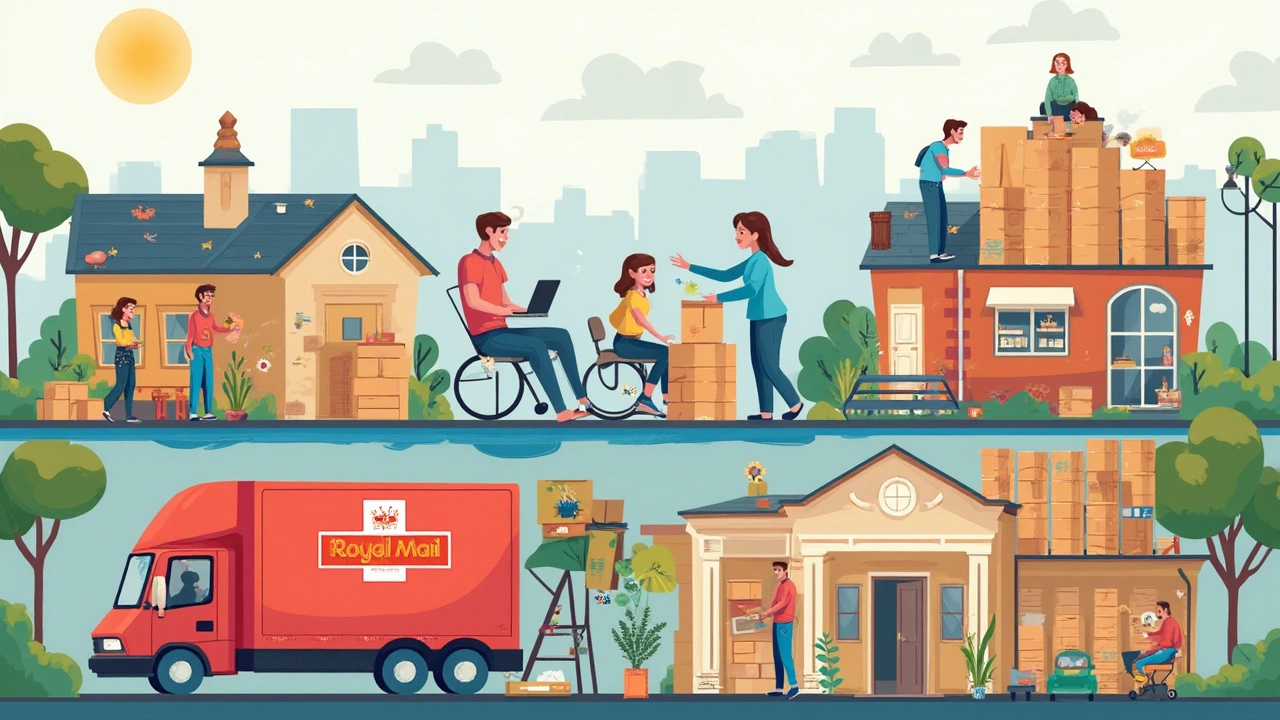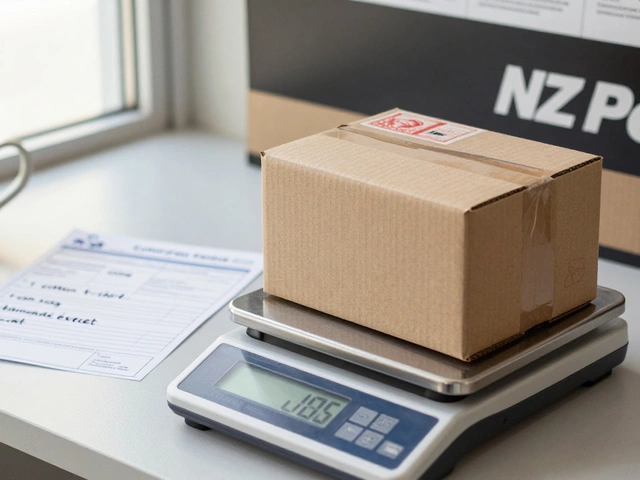Ever wondered why your new headphones show up exactly when the website promised? Or why your favorite snack doesn't taste stale, even after thousands of miles of travel? That's not magic—it's the 7 R's of logistics in action. E-commerce businesses rely on these seven simple rules to get stuff to your doorstep faster and better than ever.
The logistics world loves catchy phrases, but the 7 R's are more than just a slogan. They're basically the cheat sheet for anyone who wants to make sure people get exactly what they ordered, right when they want it. If you're running an online shop (or even thinking about starting one), understanding these 7 R's can save you headaches, money, and customer complaints. Ready to see the science behind the smile on your delivery guy’s face?
- The Power Behind the Package: What Are the 7 R's?
- Breaking Down Each 'R': How They Shape E-commerce
- Rookie Mistakes and Smart Fixes
- Turning the 7 R's into Real-World Wins
The Power Behind the Package: What Are the 7 R's?
This is where the real magic happens in 7 R's of logistics. It sounds like a school rulebook, but these seven steps are the secret sauce of hassle-free e-commerce deliveries. No matter how big or small a store is, these rules make sure people get what they want, when and where they want it, and without ugly surprises.
So what are these famous 7 R’s? Simple:
- Right Product – Not just any product, but exactly what the customer clicked "buy" for. No swapping flavors or brands unless someone asks.
- Right Quantity – One means one, not two or half. Stock errors are a quick ticket to bad reviews.
- Right Condition – Products need to arrive just like they left the warehouse. No crushed boxes or melted chocolate, please.
- Right Place – The right address, every single time. Sounds easy, but last year almost 5% of US packages were delayed or lost due to incorrect addresses!
- Right Time – On time, as promised—think of all those countdowns on checkout pages. In 2024, 83% of customers said delivery speed affects their decision to buy.
- Right Customer – The package needs to end up with the exact person who paid for it, even in busy offices or shared apartments.
- Right Cost – All while keeping expenses down. No one wants to pay extra, and businesses can't afford hidden costs either.
Here's a quick look at how these R's play out in real life ecommerce stats:
| Logistics Mistake | Customer Complaints (%) |
|---|---|
| Wrong Product Delivered | 20% |
| Lateness | 45% |
| Damaged Goods | 15% |
| Wrong Address | 7% |
| Too Expensive Shipping | 13% |
Every time one of these "R's" gets missed, problems pop up. That’s why smart e-commerce players treat these guidelines like a checklist, not a wish list. Getting these seven right can literally make or break a shop's reputation.
Breaking Down Each 'R': How They Shape E-commerce
The 7 R's of logistics break down the steps that make online shopping fast, accurate, and reliable. Even the best ad campaigns can’t save a store if it fails at these basics. Here’s what each “R” means in plain English, and why each one matters.
- Right Product: The whole process starts with getting the exact item the customer ordered—no weird substitutions, no fake brands. Mess this up, and you’ll see those returns pour in. For e-commerce, product mistakes are the top reason for unhappy reviews.
- Right Quantity: Imagine you order five packs of cat treats and only three arrive. Inventory systems must be spot-on because even a tiny mismatch can cause frustration or turn a sale into a refund. Amazon and other big e-commerce players use real-time inventory tracking to keep errors below 1%.
- Right Condition: No one wants a scuffed-up phone or a cracked mug. Packaging, careful handling, and warehouse checks all matter. Damaged goods are the #1 reason for returns in the electronics sector—over 20% according to a 2023 Statista report.
- Right Place: Delivering to the correct address matters for everyone, but especially for online stores. Tech like barcode scanning and address verification cuts down lost deliveries dramatically.
- Right Time: Customers expect quick shipping—sometimes same-day. According to Shopify’s 2024 trends report, nearly 60% of shoppers abandon carts if delivery takes too long. Companies use smart routing and reliable carriers to keep things moving.
- Right Customer: Your order shouldn’t accidentally end up with a neighbor. Verification at key steps (order processing, packing, and shipping) makes sure the goods go to the correct person.
- Right Cost: Balancing fast, accurate shipping with profits is a daily juggle. Free shipping isn’t really free—businesses crunch numbers to offer deals without breaking the bank.
Here’s a quick look at how nailing the 7 R’s impacts key e-commerce numbers:
| Logistics Factor | Result When Optimized |
|---|---|
| Right Product | Lower return rates by up to 30% |
| Right Quantity | Stockouts reduced, 98%+ inventory accuracy |
| Right Condition | 20% decrease in damages reported |
| Right Place | Misdelivered orders under 1% |
| Right Time | Cart abandonment cut by up to 50% |
| Right Customer | Improved repeat purchase rates |
| Right Cost | Shipping cost savings of 5-12% |
If you’re running or managing any kind of online shop, paying attention to the 7 R's of logistics turns logistics from a headache into an actual advantage—the secret sauce behind fast, friendly, reliable e-commerce.

Rookie Mistakes and Smart Fixes
Even big brands mess up the basics of e-commerce logistics sometimes. But let’s talk about the blunders that trip up most first-timers—and how you can keep your own shop running like clockwork.
The most common fumble? Messing up inventory. If you don’t know what you have or where it’s sitting, it’s a recipe for late shipments and angry emails. I once ordered a cat toy for Whiskers, waited two weeks, and then got an apology email—"Sorry, out of stock." To avoid frustrating customers like me (and my cat), use software that tracks what’s coming in and out, in real time. Tools like Zoho Inventory and ShipBob can automate alerts so you never sell what you don’t have.
Another mistake is shipping the wrong item or wrong quantity. Double-checking orders isn’t just nice, it’s essential. Set up a simple checklist for your team, something like:
- Does the item match the order?
- Is the quantity right?
- Is the address clear and complete?
If you’re running things solo, do a final scan before sealing up that box. Trust me, a quick moment now can dodge dozens of return requests later.
Some shops forget about picking the right delivery company. Cheapest isn’t always best. Instead, compare delivery speed, reliability, and tracking options. A study in 2023 showed that customers are 30% more likely to buy again from shops that deliver on time—no surprise there.
Returns can be a headache, too, if you make things too complicated. A clear return policy on your website and prepaid return labels go a long way. Easy returns are a game changer—for both your stress levels and your reviews.
Honestly, a lot of this comes down to planning ahead and thinking like a customer. Would you buy from your shop if you had to deal with your process? If not, tweak it. Take five minutes each week to ask your customers what bugs them about delivery, inventory, or returns—actual feedback beats guesswork every time.
Turning the 7 R's into Real-World Wins
So how do the big e-commerce pros actually turn the 7 R’s from theory into everyday success? It’s not about having a giant warehouse or buying fancy software—though those help. It’s mostly about paying attention to details and working smarter at every step, from picking products to knocking on your door.
Take Amazon. They use predictive analytics to figure out what shoppers want, keeping the right products in stock way before someone even hits “Add to Cart.” That means zero out-of-stock headaches and faster shipping. Another smart move is using fulfillment centers close to where most buyers live. That knocks days off the delivery time and slashes shipping costs.
Here's a quick look at some practical tricks that makes the 7 R’s work in the real world:
- Barcode scanning at every step cuts down mistakes. It catches the wrong item before it ever gets packed.
- Flexible delivery options—like next-day, pickup, or secure lockers—solve the “right place, right time” part.
- Automatic alerts for low stock or delivery delays mean you can fix slip-ups before customers notice.
Returns are a huge deal, too. Shops that nail the “right return” with clear instructions and prepaid labels see repeat buyers—because nobody wants to argue about a lost package or unclear policy. Zappos doubled down on this and turned hassle-free returns into customer loyalty (and major growth).
Want some hard data? Check this out:
| Company | Average On-Time Delivery (%) | Return Rate (%) | Overall Customer Satisfaction |
|---|---|---|---|
| Amazon | 96 | 8 | High |
| Zappos | 89 | 20 | Very High |
| eBay Fulfillment | 91 | 11 | Medium |
These facts show how top shops use the 7 R’s to stay ahead. For anyone running an online store, even small tweaks—like better order tracking or clear return info—can make shoppers come back again and again. It’s all about keeping promises, minimizing screw-ups, and making everything super simple for both staff and buyers.





